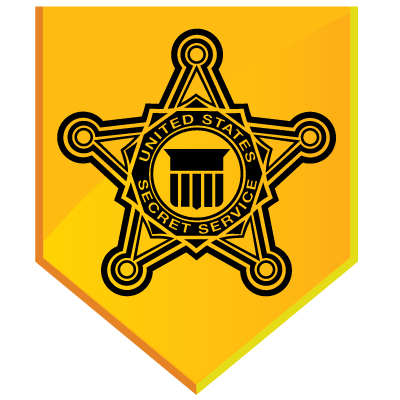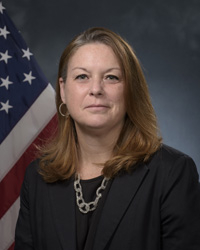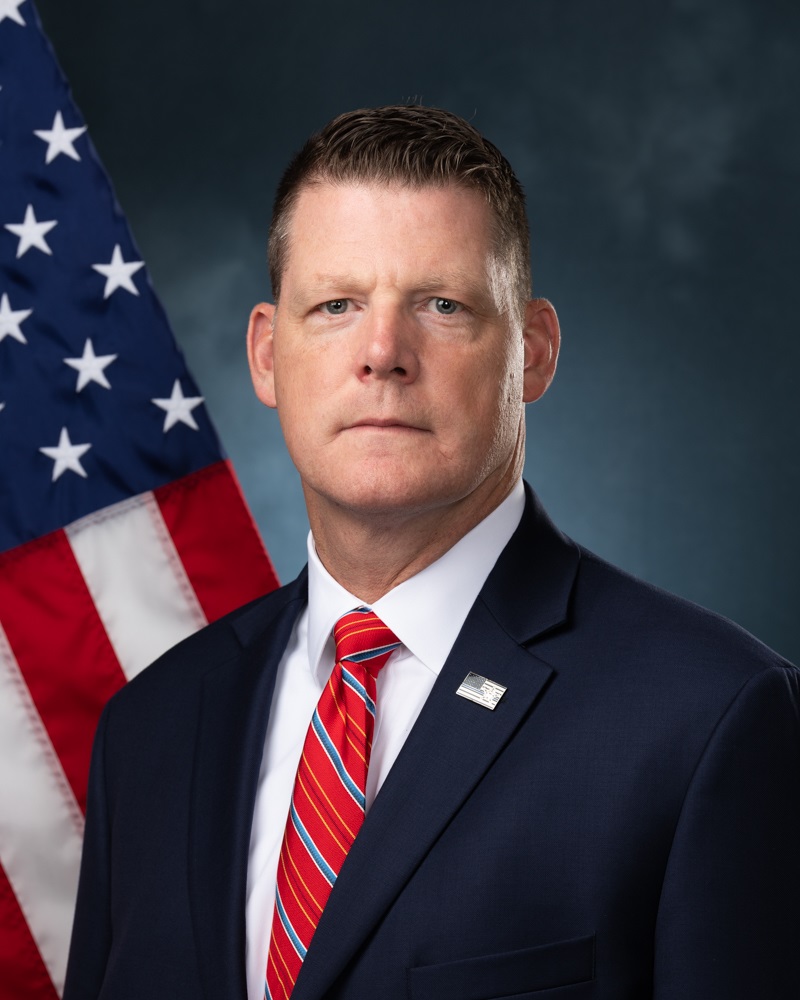23
REPORT

Message from the Director
Roughly 158 years ago, the Secret Service was created as a division of the U.S. Treasury Department. Its sole mandate was to suppress counterfeiting. From that humble beginning on July 5, 1865, to the global organization of nearly 8,000 people who accomplish our protective and investigative mission today, we are an agency with a rich and enduring legacy grounded in our commitment to hiring and retaining the best talent, exploiting cutting edge technology, and honoring diversity. In FY 2023, we built upon that legacy, and the pages that follow document yet another year of historic achievement for the women and men of the Secret Service.
Secret Service special agents and criminal analysts also protected the integrity of the U.S. financial system from a broad range of fraud, network intrusions, and other cyber-enabled attacks. This past year, Secret Service employees across the globe prevented more than $2.6 billion in cyber financial crime losses and seized more than $41.5 million in counterfeit currency. These achievements are only possible thanks to innovative training, cutting-edge technologies, and robust investigative partnerships. Specifically, collaboration with our partnership resulted in the return of $286 million in fraudulently obtained Economic Injury Disaster Loans to the Small Business Administration, which will ultimately be returned to the most vulnerable Americans.
The theme of this year’s report is excellence. There is little margin for error in the Secret Service mission, and whether standing post at the White House, hiring the next generation, or anything in-between, members of the Secret Service must demonstrate excellence each and every day.
Our agency is charged with the important task of protecting key leaders, locations, and events. In FY 2023, we continued to provide 100% incident-free protection all while planning, coordinating, and implementing security for three National Special Security Events, the State of the Union Address, the U.S.-Africa Leaders Summit, and the 78th Session of the United Nations General Assembly. In fact, our protective operations professionals developed and implemented plans for the U.S.-Africa Leaders Summit on a compressed timeline, demonstrating an exceptional degree of commitment and skill.
Secret Service Special Agents and Criminal Analysts also protect the integrity of the U.S. financial infrastructure from a broad range of fraud, network intrusions, and other cyber-enabled crimes. This past year, Secret Service employees across the globe recovered over $1 billion in cyber financial crime losses and seized more than $21 million in counterfeit currency. These achievements are only possible thanks to innovative training, cutting-edge technologies, and robust investigative partnerships. Secret Service Special Agents and Criminal Analysts also protect the integrity of the U.S. financial infrastructure from a broad range of fraud, network intrusions, and other cyber-enabled crimes. This past year, Secret Service employees across the globe recovered over $1 billion in cyber financial crime losses and seized more than $21 million in counterfeit currency. These achievements are only possible thanks to innovative training, cutting-edge technologies, and robust investigative partnerships.
This kind of excellence must be sustained by advanced planning. While managing their day-to-day mission responsibilities, personnel across the agency also kept an eye towards the future, developing novel capabilities in fields ranging from robotics to Enabling Unmanned Aerial Systems. Special Agents and Uniformed Division Officers built and maintained partnerships across the public and private sectors which will serve us well as we face protective and investigative demands in the future. Members of our training facility trained over 400 new law enforcement officers, and human resources professionals hired over 639 new employees using targeted recruitment methods that have helped us expedite the onboarding of the most talented Americans who bring a diverse array of perspectives to our mission. In this way, we achieve excellence through talent, technology, and diversity.
Each year, new recruits and executives alike are reminded that what we choose to do as public servants requires sacrifice. Yet, despite the challenges, the women and men of the Secret Service stand resolute as guardians of the world’s most enduring democracy. Our obligation, though centuries in the making, depends on our excellence every second of every day. We firmly believe that the strength of our organization lies not only in our past accomplishments, but also in our unwavering commitment to nurturing our talented workforce, investing in leading technologies, and seeking out the boundless benefits of diversity. While this report is a testament to the remarkable achievements of our personnel this past year, it is also a harbinger for all that we will accomplish in the years to come.
Working together, our presence, our persistence, and our professionalism are vital to the success of this agency, and by extension to the durability of our democracy.
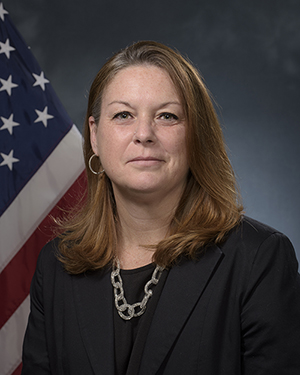

Kimberly Cheatle
DIRECTOR OF THE SECRET SERVICE

Secret service
at-a-glance
The Secret Service is committed to achieving its no-fail mission of protecting our nation’s leaders and financial infrastructure. Accomplishments detailed in this annual report were realized by the dedicated Secret Service workforce who serve across the globe, working together to achieve mission success. While the efforts of Secret Service personnel span 16 different offices, this report is organized into four categories: Protective Operations, Investigative Operations, Training, and Mission Support.
Protective Operations
Office Of
TECHNICAL DEVELOPMENT AND MISSION SUPPORT
INVESTIGATIVE OPERATIONS
TRAINING
Mission Support
Office Of
STRATEGIC PLANNING AND POLICY
Office Of
ENTERPRISE READINESS
Office Of
INTEGRITY
Office Of
EQUITY AND EMPLOYEE SUPPORT SERVICES
Year In Review
FY 2023
Each year the Secret Service works hard to keep our nation’s leaders, foreign dignitaries, and other protectees safe as they fulfill their responsibilities around the world. Further, this dedicated workforce protects the nation’s economy through cyber and financial crime investigations and related activities. Look at what they have accomplished by the numbers in FY 2023.
33 protectees in FY 2023
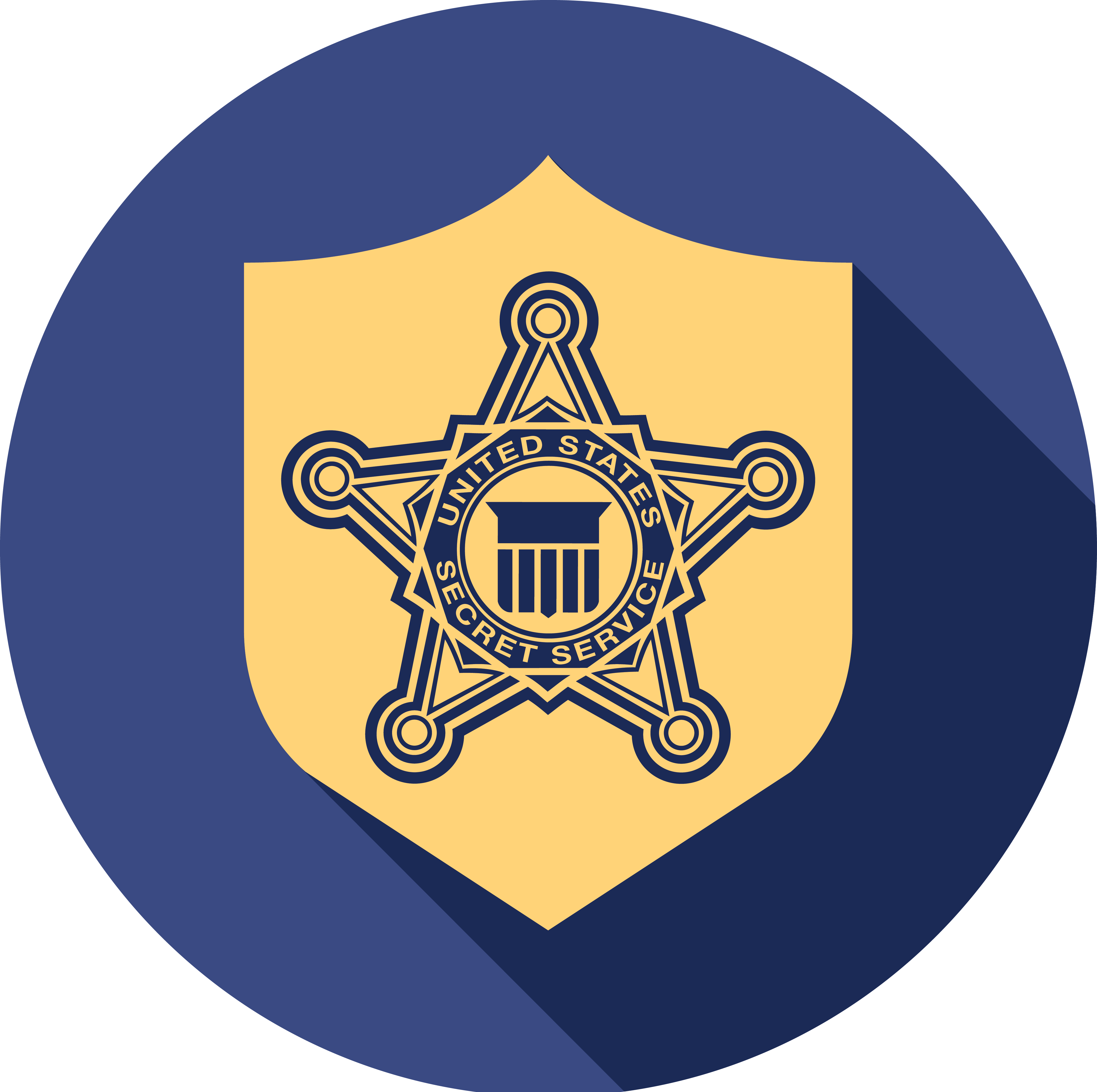
5,245 protectee visits (343 foreign)

3 National Special Security Events (NSSEs) secured
7,476 protective intelligence investigations
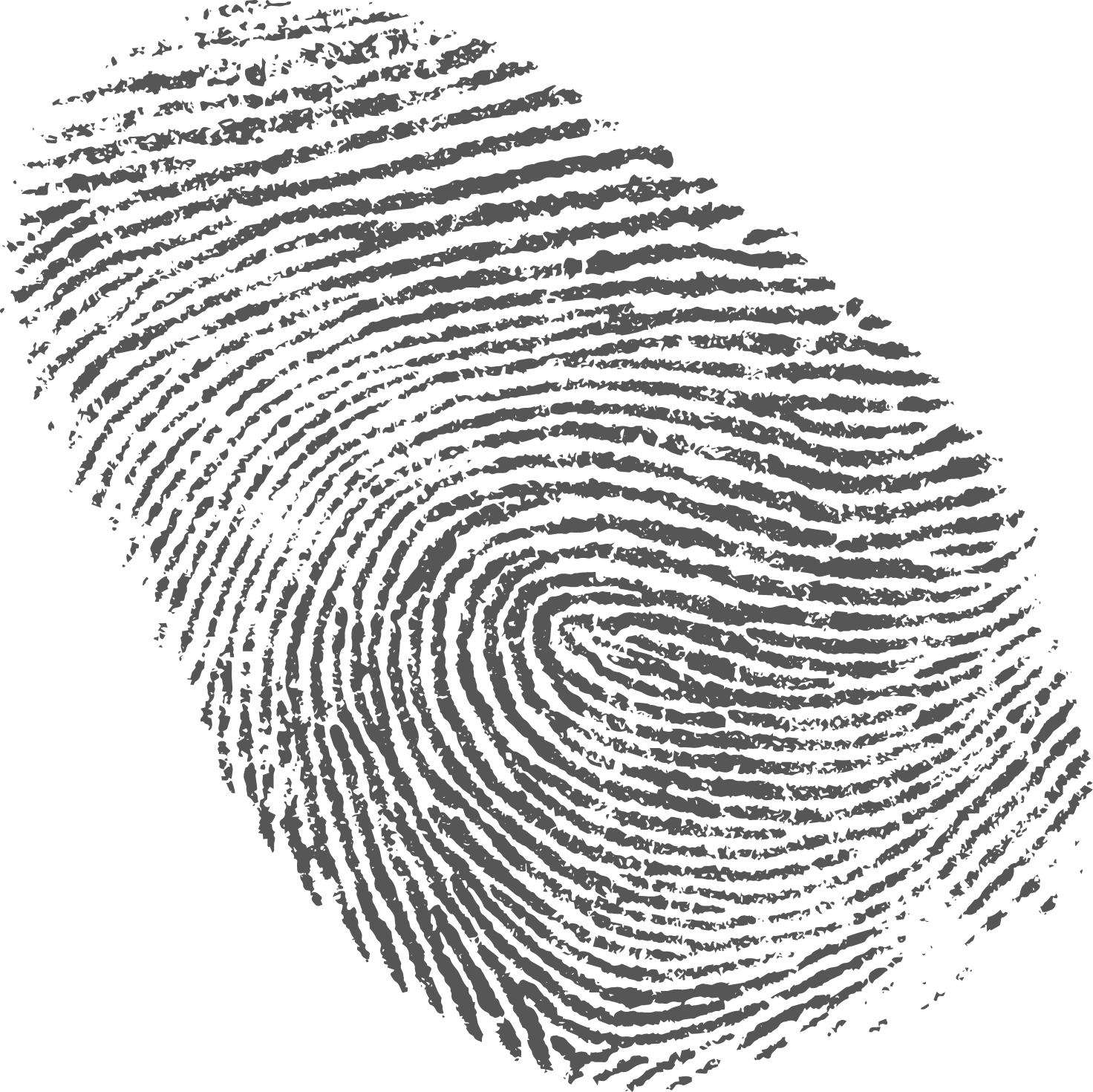
1,019 arrests for cyber financial crime
$257.5M+ in assets seized

$10.1M in Small Business Administration loan fraud seized
$41.1M+ loss prevented in pandemic-related investigations
$1.1B in cyber financial loss recovered
639 new Secret Service employees

15 Special Agent, 12 Uniformed Division, and 2 Technical Law Enforcement classes graduated
4,739 law enforcement personnel trained at the National Computer Forensics Institute

Notable events
Timeline
DEC
December 13th - 15th, 2022
US-African Leader's Summit (NSSE)
JAN
January 30, 2023
Cynthia Sjoberg Radway appointed Secret Service Chief Operating Officer
FEB
February 7, 2023
State of the Union Address (NSSE)
MAR
March 1, 2023
20th Anniversary of the Secret Service transferring to the Department of Homeland Security
APR
April 5, 2023
Six individuals indicted by Federal Grand Jury for perpetrating a multi-million dollar COVID Recovery Fund fraud scheme
JUN
June 1, 2023
Ronald L. Rowe, Jr. sworn in as Deputy Director of the United States Secret Service
JUL
July 5, 2023
158th Anniversary of the creation of the Secret Service.
AUG
August 1−3, 2023
National Computer Forensics Institute’s “Cyber Games” Competition
SEP
September 18−22, 2023
78th Session of the United Nations General Assembly (NSSE)
Protective Operations
FY 2023
THE SECRET SERVICE is entrusted with the responsibility of protecting our nation’s leaders, major events, important sites, and visiting heads of state. The agency provides full-time protection for the President and Vice President of the United States and their families; former Presidents and First Ladies; and various other high-level cabinet officials. The Secret Service also protects crucial locations such as the White House, Vice President’s residence, and foreign embassies in Washington, D.C. Securing National Special Security Events (NSSE), such as the United Nations General Assembly and State of the Union, is also under the jurisdiction of the Secret Service. During election years the Secret Service protects major candidates, the conventions, and selected debates. This is a significant undertaking, and the Secret Service has already begun preparations for the 2024 Presidential Campaign.
During FY 2023, the Secret Service accomplished its protective mission in locations across the world. When the President made an unannounced diplomatic trip to Kiev, Ukraine, Special Agents quickly developed and implemented a security plan that kept the President safe in an active war zone. Additionally, the Secret Service successfully supported trips to six cities that suffered major disasters across the United States during FY 2023. All told, the agency supported 4,811 domestic trips and 343 international trips in FY 2023. Protective operations remain a critical priority for both the Secret Service and the nation.
Protection by the Numbers
4,811
DOMESTIC VISITS
343
FOREIGN VISITS
91
TERRITORY VISITS
5,245
TOTAL VISITS
138
PROTECTIVE ANALYSIS BRIEFINGS
TO 4,489 PEOPLE
10,000
MAIL SAMPLES ANALYZED
3,100
PIECES OF PERMANENT AND
TEMPORARY PROTECTIVE
EQUIPMENT INSTALLED
1M+
PEOPLE SCREENED AT PUBLIC
WHITE HOUSE EVENTS
stories From This year
-
Providing Dignitary Protection

The Secret Service is responsible for protecting foreign heads of state or heads of government visiting U.S. soil. Additionally, the Uniformed Division’s Foreign Missions Branch provides year-round protection of embassies and diplomatic residences in Washington, D.C. Foreign leaders often visit the United States to attend NSSEs, such as the annual session of the United Nations General Assembly in New York City or a diplomatic summit. This past year, the Secret Service planned and implemented security operations for the 78th Session of the United Nationals General Assembly and the U.S.-Africa Leaders Summit, in addition to protecting visiting dignitaries at these events.
The U.S.-Africa Leaders Summit took place in Washington, D.C. in December 2022, with heads of state from 44 nations attending. Beyond discussions at the Washington Convention Center, visiting dignitaries attended a Congressional reception on Capitol Hill, a forum at the Smithsonian’s National Museum of African American History, and a dinner at the White House.
Ensuring the safety of events, locations, and people requires careful planning. Whereas NSSE planning timelines typically span one year, the Secret Service was afforded only three months to develop and execute a security plan in partnership with other law enforcement agencies. The event’s success was largely due to the Secret Service’s long-standing partnerships with federal, state, and local law enforcement, as well as its existing communications infrastructure that allowed for rapid establishment of a multi-agency communications center. Secret Service analysts and other partners further supported the protective efforts by assessing threats, managing risks, and creating specialized briefings.
Another essential element of the plan included establishing a secure perimeter consisting of anti-scale fences and checkpoints around the convention center. During the summit, Special Agents and Uniformed Division Officers stood post around the perimeter of the Convention Center. Special Agents and Uniformed Division Officers also protected visiting dignitaries at official events and hotels. When protesters demonstrated outside the Cameroon delegation’s hotel, Secret Service personnel monitored the demonstration and ensured that all dignitaries remained safe. Special Agents also facilitated motorcade movements to ensure visiting African leaders were able to safely navigate the challenging Washington traffic. Beyond the visible Special Agents and Uniformed Division Officers providing protection, a lot happens behind the scenes before, during, and after the event, from initial assessment to information sharing with partners and constant monitoring.
Securing events such as the U.S.-Africa Leaders Summit and the 78th Session of the United Nations General Assembly allows the Secret Service to build partnerships with international protection agencies, which often support Secret Service protective operations when traveling abroad. Overall, protection of foreign dignitaries remains a key part of the Secret Service’s mission.
-
Riding with History: The Motorcade Support Unit
Established in 2001 with a class of eight recruits, the Motorcade Support Unit provides motorcycle-based support to protective motorcades, dignitary funerals, and other events of national significance. Today the unit has 17 team members and a fleet of 33 Harley Davidson motorcycles. These motorcycles and the personnel that drive them have since become a well-recognized symbol of the Secret Service.
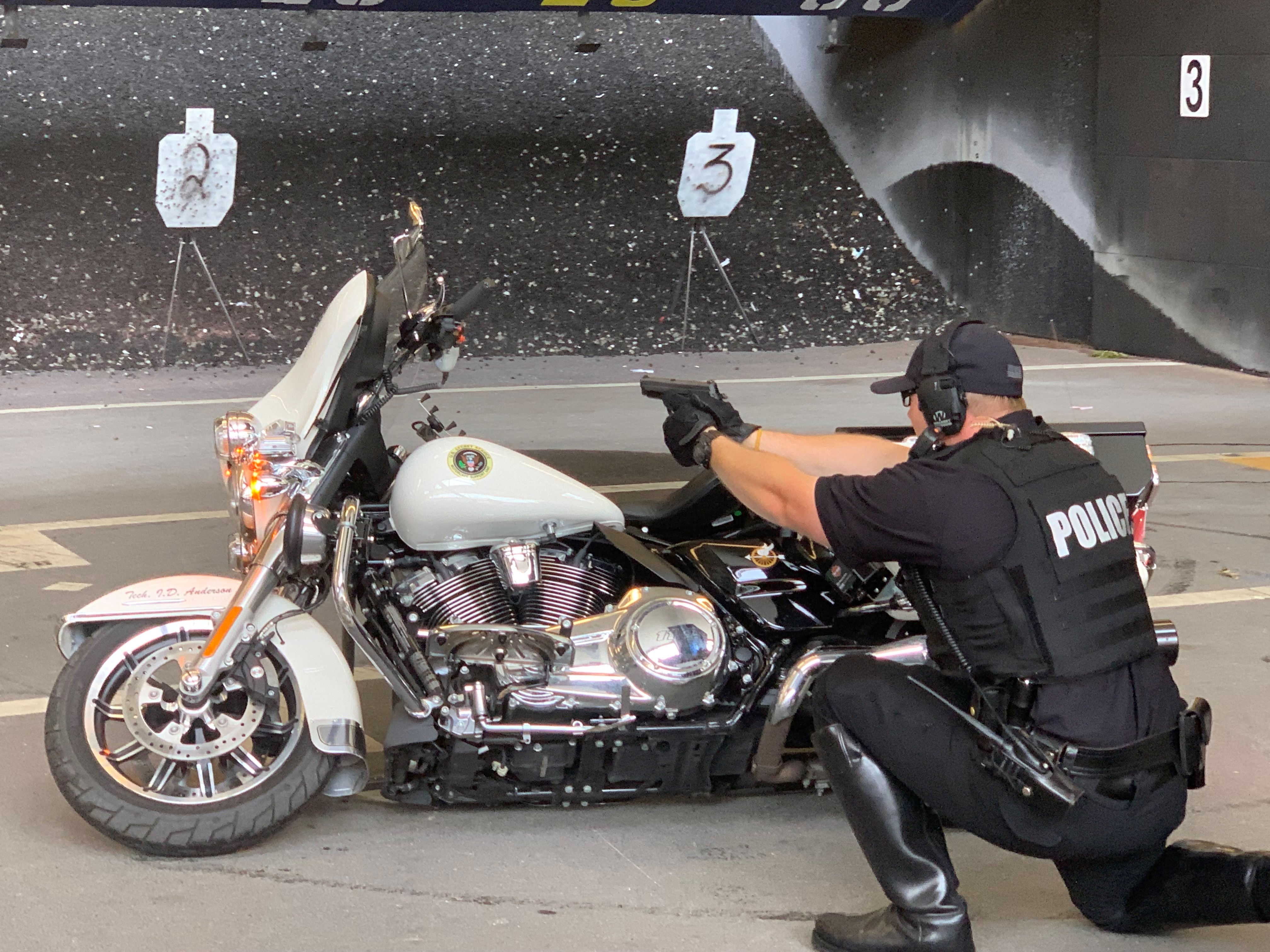
Lieutenant Kenneth Smith has served on the motorcade unit for over two decades. “The minute I heard about the motorcade unit, it was all I wanted to do,” he says. Growing up in New York, Lieutenant Smith developed a passion for motorcycles while watching police motorcades ride in the Macy’s Thanksgiving Day parade. After joining the Secret Service, he served at the White House before transferring to the motorcade unit at the first opportunity.
While moving up through the unit’s ranks, Lieutenant Smith has been integral to the motorcade team’s maturation. To improve the effectiveness and professionalism of the unit, he upgraded the team’s emergency lights, acquired new uniforms, and expanded the team’s office space. He even worked with a graphic designer to design the team’s winged logo. In addition to these improvements, Lieutenant Smith also created a mechanic’s bay in the team’s garage. In the past they relied on outside mechanics for repairs, but today the Secret Service is hiring professional auto mechanics, providing cost savings for the Secret Service.
Lieutenant Smith also modernized the team’s equipment and gear by creating a life-cycle replacement program. The team typically replaces motorcycles every 5-6 years. The unit rides year-round, no matter the weather, which requires specialized gear. In winter, the motorcycles are equipped with sidecars to provide stability while driving on icy Washington, D.C. streets. Because Harley Davidson no longer produces these sidecars, the Secret Service sidecars require customized maintenance and care to remain operational.
Joining the Motorcade Unit is no easy feat. To join the unit, applicants must pass an intense two-week training course that includes a riding assessment, a physical fitness test, and a panel interview. Applicants must also lift the motorcycle upright from a downposition. Although applicants generally enter the program with significant motorcycle experience, learning to ride the heavy Secret Service motorcycles still proves challenging for many trainees.

To successfully pass this rigorous training, Officer-Technician Alta “Lauren” Gunawan says that applicants must have strong internal motivation and a positive attitude. The training “forces you to push through even when you think you can’t,” she says. During training, Officer-Technician Gunawan initially struggled to lift the motorcycle but remained determined. “I really wanted this,” she says. On her second attempt, Officer-Technician Gunawan lifted the motorcycle, passed the course, and became the first woman to join the Motorcade Unit.
Established in 2001 with a class of eight recruits, the Motorcade Support Unit provides motorcycle-based support to protective motorcades, dignitary funerals, and other events of national significance. Today the unit has 17 team members and a fleet of 33 Harley Davidson motorcycles. These motorcycles and the personnel that drive them have since become a well-recognized symbol of the Secret Service.
Officer-Technician Gunawan enjoys that she gets “paid to ride a motorcycle and be a part of history every day. It’s not just about riding a motorcycle though, it’s the passion and pride that I have for this unit, which I love.” Officer-Technician Gunawan encourages any motorcycle enthusiasts to apply. “It’s a once in a lifetime opportunity to push yourself out of your comfort zone,” she says.
Lieutenant Smith also takes great pride in leading the Motorcade Support Unit. In his supervisory role, he especially enjoys the logistics involved in coordinating events. “Seeing something go off without a hitch after you’ve spent a lot of time planning it, that’s very satisfying,” he says. Going forward, Lieutenant Smith hopes to exchange more best practices with other law enforcement entities. The Milwaukee Police Department’s motorcade unit recently adopted a tactical change learned while training with the Secret Service.
Secret Service motorcycles and the Uniformed Division Officers that drive them are active participants in history. One of the unit’s original motorcycles now sits on proud display in the lobby of the Secret Service’s headquarters. This retired motorcycle has a distinguished history, including escorting cabinet members to secure locations during the September 11 attacks. While dedicating the display, Secret Service Director Cheatle described how the motorcycle “evokes pride in the momentous mission we undertake daily.” The motorcade unit and its brave personnel play a crucial role in fulfilling the agency’s mission.
-
Working to Prevent Mass Attacks
The Secret Service’s National Threat Assessment Center (NTAC) conducts behavioral threat assessments to support the agency’s protective mission. These assessments aim to prevent attacks by identifying concerning behavior that could forewarn a violent incident. Since NTAC’s establishment in 1990, it has proactively assessed threats to prevent violence, both to Secret Service protectees and the community at large.
In January 2023, NTAC released a report called Mass Attacks in Public Spaces: 2016- 2020, analyzing data on 173 mass attacks in the United States. These attacks impact all segments of society, including businesses, schools, houses of worship, and military bases. The purpose of the report was to provide communities with the tools, training, and resources needed to intervene before violence occurs. “Everyone in the community plays a role in violence prevention,” says NTAC Chief Dr. Lina Alathari.
In the report, NTAC analysts identified key commonalities in the attacks studied. The report found that most attackers had a history of physically aggressive behavior. Even before committing a large-scale attack, most attackers had previously caused friends, relatives, or other acquaintances to fear for their personal safety. In addition, 25% of attackers believed in conspiracy theories or hateful ideologies. Many attackers had also experienced stressful life events or severe mental health crises prior to the attack.
The Mass Attacks in Public Spaces: 2016-2020 report has helped communities take measures to prevent violence. NTAC presented the report findings at two virtual rollout events, drawing a combined 32,278 registrants from 92 countries and all 50 states. Registrants represented a variety of organizations, including other federal government agencies, school districts, and private corporations such as Walmart and Major League Baseball. “Targeted violence is preventable if communities have the right information and resources,” says Dr. Alathari. NTAC will continue providing communities with the tools needed to prevent tragic mass attacks.
-
Technology’s Cutting Edge: The Secret Service Researches Robotics
Secret Service technical security personnel use advanced technology to support the agency’s mission, from managing the cutting-edge alarms and cameras on the White House complex to protecting against unauthorized drones, dangerous chemicals, and explosives. To fulfill this mission, Secret Service technical personnel must constantly learn about the latest private sector technological developments.
One area of development that the Secret Service has monitored is robotic technology. Robotics and artificial intelligence can increase mobility and effectiveness while minimizing the risk of physical injury. Because robots can operate in environments that are not safely accessible to humans, they can examine a debris field resulting from a natural disaster or assess a chemical leak to measure the level of dangerous gasses. Robots can also enter collapsed or damaged buildings to determine structural integrity or to clear confined spaces. The possible application of robots to perform routine autonomous tasks could potentially reduce dangers to Secret Service personnel.
As part of its research into public safety robotics, the Secret Service explored the capabilities of quadruped robotic technology—more commonly known as robotic dogs. The private sector’s latest robotic dogs can climb stairs, open doors, and move fluidly over rough or uneven terrain. Robotic dogs are equipped with software platforms and use on-board cameras to map the external environment. These cameras feed data into algorithms that enable the robotic dog to perform autonomous tasks, such as picking up an object. Robotic dogs can also carry specialized sensors that detect hazardous materials from a safe distance.
To advance the agency’s ongoing research, a team of specialists—to include engineers, Physical Security Specialists, Technical Security Investigators, and Special Agents—recently traveled to the Federal Law Enforcement Training Center in Brunswick, Georgia to test robotic dog capabilities. The technology has significant potential to enhance the agency’s protective mission. The Secret Service will continue its research on robotic dogs and other emerging technologies to determine the best deployment into its live operations. Through the work of this team and other partners, the agency is prepared to leverage innovative technologies to support its mission.
-
Online Protection and Open-Source Intelligence
Malicious actors often post threats and display unusual interest toward Secret Service protectees on social media, open discussion boards, and online chatrooms. Starting in 2019, the Secret Service formed a unit to conduct round-the-clock open-source social media analysis to identify and investigate concerning behaviors. Based on the analysis, the unit shares relevant information with Secret Service leadership and operational personnel to inform investigations and protective activities. Open-source information is an important element in understanding the threat landscape and provides front-line Special Agents and Uniformed Division Officers with the information needed to keep protectees and protected sites safe.
Special Agents and analysts with a wide range of backgrounds all help conduct open-source research. Their work focuses on monitoring publicly available social media accounts to identify potential threats and unwanted outcomes. The Secret Service adheres to strict privacy guidelines and focuses on publicly available information. These efforts require Special Agents and analysts to constantly collaborate with both law enforcement and private sector partners to support the branch’s mission.
As the threat from malicious online actors becomes more complex, the Secret Service continues to expand its capabilities, including more advanced cyber tools. The Secret Service is designing its first Open-Source Intelligence Operations Center, which will be housed in the Secret Service headquarters in Washington, D.C. This Operations Center will incorporate new technology and an updated layout to facilitate information sharing and collaboration. These continual innovations allow the Secret Service to continue countering ever-evolving online threats.
Protective Operations Spotlight Series
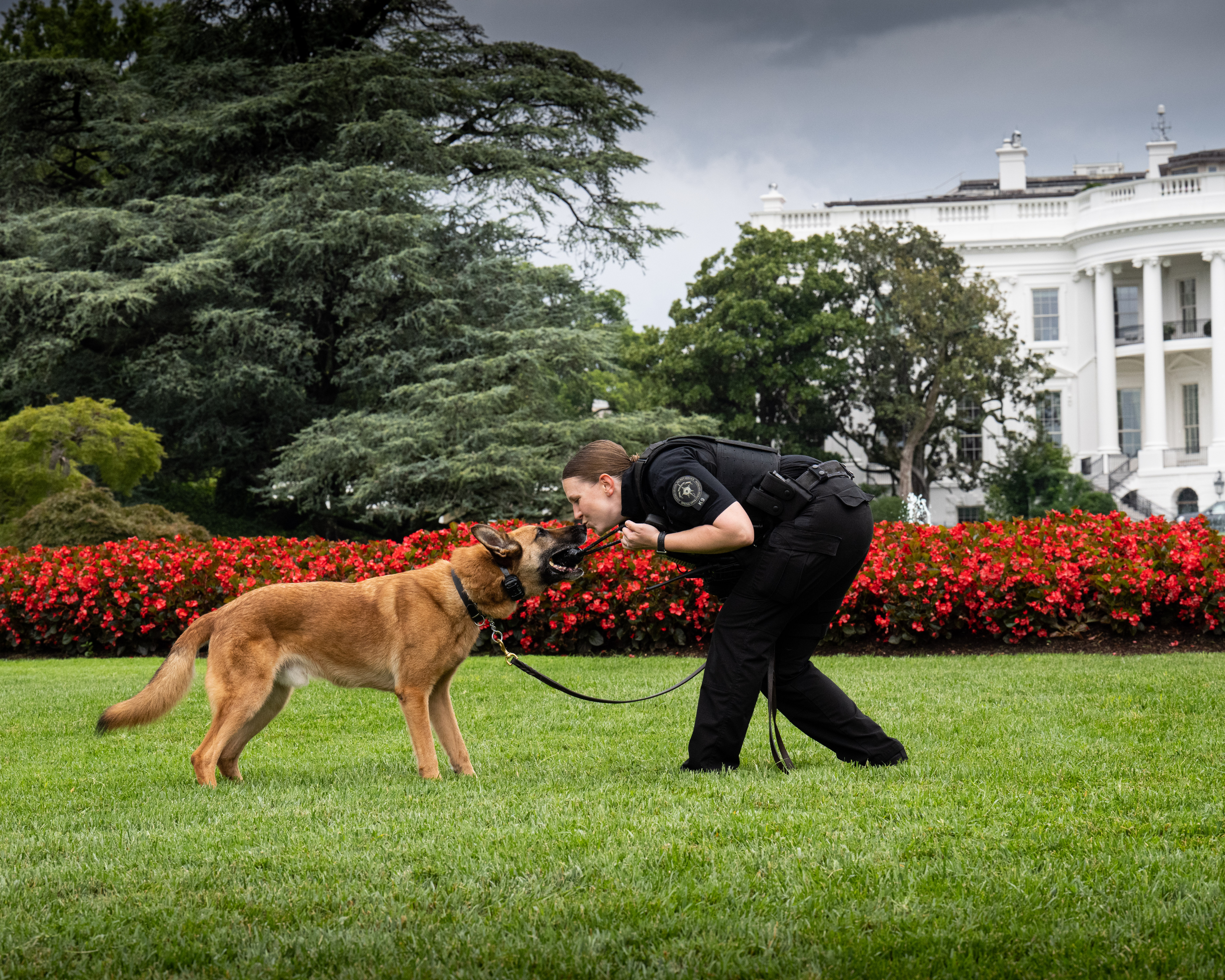
Protective Partnership

Internet Investigations

Eyes in the sky
Investigative Operations
FY 2023
INVESTIGATION
BY THE NUMBERS
CYBER-FINANCIAL CRIME LOSS RECOVERED:
$1.1B
ARRESTS FOR COUNTERFEITING:
197
ARRESTS FOR CYBER FINANCIAL CRIMES:
1,019
COUNTERFEIT CURRENCY SEIZED:
$21.8M
ASSETS SEIZED:
$257.5M
ASSETS RETURNED TO VICTIMS:
$464.9M
CRYPTOCURRENCY-RELATED ASSETS SEIZED:
$98.9M
THE SECRET SERVICE'S INVESTIGATIVE MISSION continues to adapt to the changing nature of financial crime. Digital technology has transformed the global economy. The increase in global internet services, mobile computing power, and digital systems, has resulted in a networked financial sector that never sleeps. Online banking, mobile money transfers, cryptocurrency, and contactless payments have changed how Americans make financial transactions. As this digital revolution transforms the global economy, the nature of financial crime also adapts. Longstanding geography-based boundaries have been blurred, and malicious cyber actors can easily conspire across borders and target victims all around the world. Evidence needed for investigations is now often exclusively in a digital format, on a mobile phone, personal computer, web server, or a distributed ledger stored all over the world.
To tackle this unique challenge, the Secret Service’s investigative function operates through an integrated global network of field offices, task forces, and partnerships. Our Special Agents, analysts, and partners conduct investigations around the clock to safeguard the integrity of the U.S. financial system and protect the American people. To address financial crime in today’s environment, the Secret Service focuses on the following issue areas.
Our Investigative Operations
Cyber-Enabled Financial Crime

With the digitization of financial payment systems, transnational cyber-enabled financial crimes have grown. Transnational criminal organizations present systemic risks to the American financial system. The Secret Service remains at the forefront of detecting, preventing, and disrupting this type of criminal activity. Secret Service investigations brought many cyber-criminals to justice in FY 2023 and recovered $1.1 billion dollars in cyber financial loss. Additionally, Secret Service investigations also prevented potential fraud loss by arresting individuals before they could fully realize the gains from their crimes.
Fraud, Money Laundering, and Other Financial Crimes

Fraudulent operations that prey on Americans and take advantage of the U.S. financial system undermine collective trust in our economy. The Secret Service works daily to counter threats ranging from card skimmers, ATM cash out schemes, laundering, business email compromise, and other illicit actions. In a digitally connected world, investigative success, even with respect to more traditional financial crimes, depends on broad and dynamic partnerships with industry, state and local officials, and international law enforcement groups. The Secret Service grows and develops these partnerships to harness the collective expertise of organizations across the world to tackle the challenges inherent to a digital, data-driven economy.
Cyber Fraud Task Force

In 1995, the Secret Service established its first electronic crimes task force, modeled after the Secret Service’s existing financial crimes task forces. The agency has since expanded that model to develop a national network of electronic crimes task forces for the purpose of preventing, detecting, and investigating various forms of electronic crimes.
Known as Cyber Fraud Task Forces (CFTF), these groups unite team members from a variety of backgrounds to focus on investigating cyber financial crimes, including emerging trends like the illicit use of cryptocurrency. Many members of state and local law enforcement act as task force officers within the CFTFs after training at the Secret Service’s National Computer Forensic Institute. These task forces are also comprised of Secret Service Special Agents, technical experts, and forensic analysts operating in the CFTF Digital Evidence Forensic Labs.
At present, the Secret Service has operationalized CFTFs in 42 domestic offices. In the coming years, the Secret Service plans to further extend the network of CFTFs across the country and around the globe.
Counterfeiting

At its inception in 1865, the Secret Service was authorized to combat counterfeiting, which had become a major threat to the economy following the Civil War. Special Agents at the time had a simple method—infiltrate the criminal groups involved in counterfeiting operations and arrest key members of those groups. Shutting down these operations was critical to instilling nationwide trust in the dollar and the American financial system. Today, combatting counterfeit remains a core investigative responsibility, and the ability of our forensics specialists to detect, identify, and trace counterfeiting to its source remains unmatched. However, evolving technologies have led the Secret Service to diversify its methods to effectively investigate counterfeit operations that are facilitated over and aided by digital platforms.
Investigative Operations Spotlight Series

Shutting Down K0pa:
The Importance of International Partnerships

International Money Laundering Syndicate Shut Down

PARTNERSHIPS WITH THE COMMUNITY

Community Outreach and Childhood Safety
TRAINING
FY 2023
ELITE TRAINING
is essential for Secret Service employees to develop the skillsets needed to accomplish the protective and investigative missions. The Secret Service has a dedicated training facility, the James J. Rowley Training Center (RTC), to meet these needs. At the facility, new recruits and existing employees are trained around-the-clock in skills such as motorcade movements, defensive driving, conducting a search warrant, and firearm handling, among many others.
TRAINING BY THE NUMBERS
15
GRADUATED: 254 new Special Agents
12
GRADUATED: 180 new Uniformed Division Officers
2
GRADUATED: 19 new Technical Law Enforcement Officers
training classes conducted
students
firearms qualified
completed CNOS trainings
instances of online training
TRAINING TOPICS
Open House at RTC

RTC, located in Maryland, initially served as a site for the Federal Law Enforcement Training Center (FLETC), an interagency federal training center. In 1971, the facility was transferred to the Secret Service for its exclusive use. It was called the Beltsville Training Center until 1983, when it was renamed to honor James J. Rowley, the Secret Service’s fourteenth director, who played a significant role in the development and acquisition of the facility. Currently, it provides the space, facilities, privacy, and security needed for the Secret Service to train its employees in its specialized curriculum.
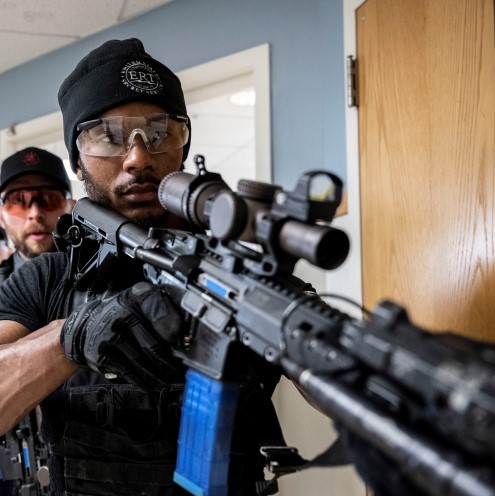
RTC has proudly hosted various groups and organizations for tours in FY 2023, and leveraged these tours to recruit, engage with the public, and strengthen the Secret Service’s relationship with investigative and protective partners. In FY 2023, RTC hosted more than 50 tours of the campus. Seventeen of the tours in 2023 focused on recruitment, requiring ample intra-agency coordination. These tours provided over 350 potential candidates an inside look at the dynamic training and mission of the Secret Service. The tours highlighted both Special Agents and Uniformed Division Officers through a series of live demonstrations showcasing the canine unit, the Virtual Training Simulator, and the Protective Operations Driving Course. College students, members of the military, and interns from partnering agencies were able to see how they might train to become an elite member of the Secret Service. Assistant Special Agent in Charge (ASAIC) Michael Cantilena describes how the tours are used as a recruitment opportunity:
“An RTC recruitment tour is an exclusive Secret Service job fair with multiple examples of our mission and dynamic training. It takes potential candidates away from conversations at a job fair booth, where our recruiters are competing with other agencies, and puts them into daily training exercises. The opportunity to tour a training center is exclusive to our agency, other agencies do not typically offer these types of tours. Tours also allow us to focus on recruiting a variety of groups, such as collegiate athletes, criminal justice students, interns, or other potential candidates.”
Preparing for a Campaign

In every image or video of the President of the United States, one is likely to spot a Special Agent, standing sentry against whatever dangers may come. Secret Service protection, however, often starts well before the President ever sets foot in the Oval Office—when they are just a citizen aspiring for the high office. The Secret Service began protecting major presidential candidates in 1968 after the assassination of Senator Robert F. Kennedy, who was seeking the Democratic presidential nomination that year. To support campaign protection every presidential election cycle, the Secret Service formed the Candidate Nominee Operations Section (CNOS) in 1998.
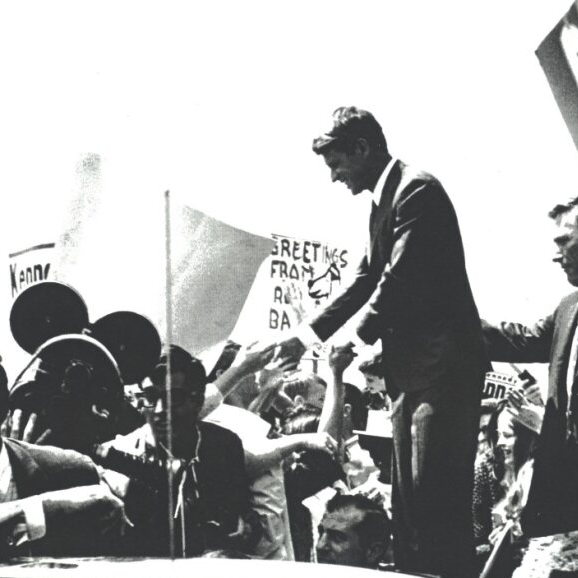
Preparation for a presidential campaign begins well before the campaign season. The Secret Service started laying the groundwork for the 2024 presidential campaign season in March of 2023. Several hundred Special Agents from a variety of divisions across the Secret Service were identified to participate in CNOS training.
These Special Agents participate in a tailored protective methodology training course, arranged in small groups for personalized instruction. Each CNOS training course has about 30 participants, each of whom will receive training in topics ranging from emergency medicine to shift formations. CNOS training has evolved over the years to allow for more hands-on training including drills and simulated attacks on protectees.
RTC personnel also provided two-day CNOS Field Training seminars to over five regional field offices. The seminar was designed to update personnel in field offices on new protective trends and other considerations for those who may become involved in protective campaign assignments due to their location. Coordinated through the Regional In-Service Training Section, the seminar included briefings on protection advances (leads, site advance, and transportation advance), as well as presentations on protective intelligence, employee assistance programs, and technical security programs.
Preparing for a presidential campaign is a resource intensive operation, but it serves a vital function that ensures the integrity and vitality of our nation’s electoral process. With experienced Special Agents, advanced preparation, and CNOS training, the Secret Service is ready to protect candidates in the 2024 presidential election.
Secret Service Rescue Swimmer Program

The Secret Service Rescue Swimmer Program, a specialization within the Secret Service Water Safety Program, began as a small group of specialists in the early 1990s. At the time, President George H.W. Bush frequented his summer home in Kennebunkport, Maine, and participated in a variety of aquatic activities, including fishing and boating.
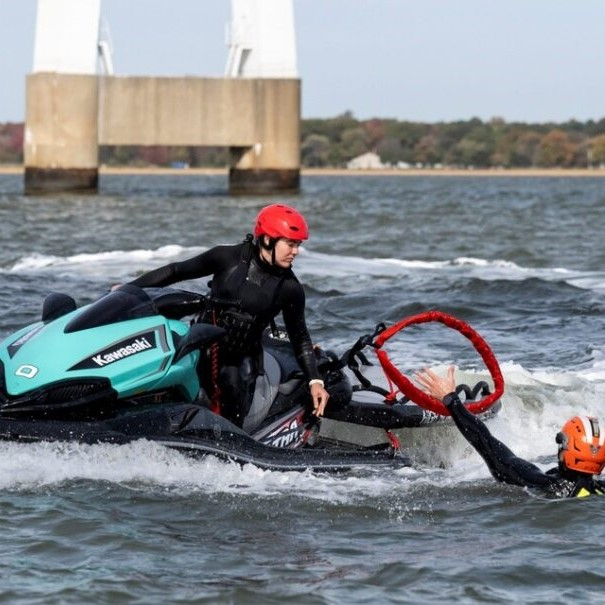
The Secret Service recognized a need to supplement the Presidential Protective Detail with men and women who were formally trained to respond effectively to a waterborne emergency. In the years since, other protectees have spent significant time near the water. Due to this requirement, the program has grown and evolved from a handful of specifically trained specialists to a full contingent of highly trained and certified Secret Service Rescue Swimmers.
All aspiring rescue swimmer candidates must attend the Rescue Swimmer Basic Course. Earning a spot in the course is challenging, as candidates must pass a very rigorous selection process to be considered. All candidates must also complete the RTC Emergency Medical Technician (EMT) Course and become nationally certified EMTs prior to beginning the course.
The basic course is taught at RTC and other off-site locations. Centered around a variety of aquatic settings, candidates are inserted into dynamic and realistic training environments, such as static water, high surf, deep water, and swift water. Rescue swimmers are highly trained in all facets of water rescue, and graduates of the course are certified to conduct open-water, surf, and swift water rescues. This course provides the necessary skill sets for rescue swimmers to safeguard our protectees in dynamic and inherently dangerous water environments. Due to the potentially unforgiving nature of these environments, the Rescue Swimmer Basic Course is one of the most challenging the Secret Service has to offer. Those who graduate this course have demonstrated they have the skills, abilities, and stamina to operate safely and effectively in the maritime environment.
From a humble beginning in 1990, the Secret Service Rescue Swimmer Program has grown into a highly respected program able to support the protective mission anywhere in the world.
The training has evolved to meet the needs of current protectees’ aquatic activities, including, but not limited to, paddleboarding, snorkeling, and scuba diving. The program developed new tactics and procedures that give our swimmers the capability to respond to waterborne emergencies from various platforms, to include boats, jets skis, and helicopters. Swimmers also receive continual training to enhance and maintain their medical skills. The Rescue Swimmer Program remains one of the most challenging and physically demanding specialty certifications to attain in the Secret Service.
TRAINING Spotlight

In Remembrance of Special Agent Clifford Dietrich and the Creation of the Water Safety Program

Weapons Specialist David Cohen
MISSION SUPPORT
FY 2023
ALONGSIDE SPECIAL AGENTS AND UNIFORMED OFFICERS, a dedicated workforce of administrative, professional, and technical experts (APTs) provide invaluable support to enable the Secret Service to accomplish its mission each day. Through continuous human capital efforts, robust strategic planning, cutting-edge information technology, skilled financial management, and rigorous training, among other mission-enabling activities, APTs help the agency achieve operational excellence. The professionalism, diversity, adaptability, and excellence demonstrated by Secret Service mission support personnel exemplify why the Secret Service remains the preeminent federal law enforcement agency in the United States.
MAINTAINING FEDERAL PARTNERSHIPS
The Secret Service accomplishes its full mission through robust partnerships and relationships across the federal government. To ensure the agency can meet current and future mission requirements, the Secret Service relies on a continuous dialogue with members of Congress and their staff. Secret Service Congressional Affairs personnel fulfill this liaison role, relaying the agency’s legislative priorities, including the annual budget request and other mission needs. These professionals routinely engage with field offices to organize meetings between Secret Service leadership and local members of Congress to ensure awareness of the work the agency is doing in their districts and to highlight the work of this elite organization.
Operational Advisory Groups (OAGs) are another vital partnership, allowing stakeholders to provide direct input to the Secret Service to better inform resourcing decisions on topics of interest. In FY 2023, the OAG addressed deployable barriers for protective events. Secret Service personnel met with vendors as well as representatives from other federal agencies to discuss common acquisition needs related to deployable barriers. The OAGs leverage partnerships to learn from the experiences of various end users, subject matter experts, program managers, vendors, and acquisition personnel. Secret Service analysts review this information to identify solutions for any current or emerging capability gaps. In this way, the Secret Service ensures it obtains high-quality information to help identify emerging technology, forecast future threats, and coordinate updated legislation and policies.

Mission Support by the Numbers
1,371
RECRUITING EVENTS
2.5M+
INDIVIDUALS ENGAGED ON SOCIAL MEDIA
1.2M+
WEBSITE VISITORS
74.4K
PODCAST EPISODE PLAYS
730
LAPTOPS DONATED TO SCHOOLS
100%
FISMA SCORECARD METRICS EXCEEDED
100+
MEETINGS WITH CONGRESSIONAL MEMBERS AND STAFF
130+
BRIEFINGS TO DHS SECRETARY AND EXECUTIVE LEADERSHIP
3,865
VISAS PROCESSED FOR MISSION-RELATED TRAVEL
2,355
PASSPORT PROCESSED FOR MISSION-RELATED TRAVEL
639
NEW SECRET SERVICE EMPLOYEES
Learn More About Mission Support Services
Mission Support Spotlight Series

Recruiting Gold Medal Talent

Preserving Our Legacy
JOIN US
United States Secret Service
BE TOMORROW'S
SECRET SERVICE
Careers at the secret Service
Professional, Technical
Student and Veteran Employment Opportunities
Student Employment Opportunities
Opportunities for high school to graduate students, and all in between, to learn from an elite group of individuals who are among the brightest and most committed in the nation.
Internship Program
The Pathways Student Intern Program is designed to provide students enrolled in a wide variety of educational institutions, from high school to graduate level, with opportunities to work in agencies and explore Federal careers while still in school with flexible scheduling and while getting paid for the work performed.
Recent Graduates Program
The Recent Graduates Program affords developmental experiences in the Federal government and is intended to promote possible careers in the civil service to individuals who have recently graduated from qualifying educational institutions or programs.
Presidential Management Fellows (PMF) Program
The PMF program is a flagship leadership development program for advanced degree candidates. This program attracts and selects from among the best candidates and is designed to develop a cadre of future Federal Government leaders.
Veteran Employment
Opportunities
Opportunities for veterans to learn from an elite group of individuals who are among the brightest and most committed in the Nation.
DOD SkillBridge
DoD SkillBridge is an opportunity for service members to gain valuable civilian work experience through administrative, professional, technical internships during the last 180 days of service.
Operation Warfighter (OWF)
Operation Warfighter (OWF) is a DoD internship program that matches qualified wounded, ill, and injured service members with non-funded federal internships in order to gain valuable work experience during their recovery and rehabilitation in an administrative, technical, professional internship.
There is more to see in the FY23 Annual Report PDF!
About This Report
The Secret Service is committed to achieving its no-fail mission of protecting our nation’s leaders and financial infrastructure. Accomplishments detailed in this annual report were realized by the dedicated Secret Service workforce who serve across the globe, working together to achieve mission success. While the efforts of Secret Service personnel span 16 different offices, this report is organized into four categories: Protective Operations, Investigative Operations, Training, and Mission Support.
There is more to see in the FY23 Annual Report PDF!

ROUGHLY 158 YEARS AGO, THE SECRET SERVICE was created as a division of the U.S. Treasury Department. Its sole mandate was to suppress counterfeiting. From that humble beginning on July 5, 1865, to the global organization of nearly 8,000 people who accomplish our protective and investigative mission today, we are an agency with a rich and enduring legacy grounded in our commitment to hiring and retaining the best talent, exploiting cutting edge technology, and honoring diversity. In FY 2023, we built upon that legacy, and the pages that follow document yet another year of historic achievement for the women and men of the Secret Service.
Every day, our agency is entrusted with protecting key leaders, locations, and events. In FY 2022, we continued executing our protective responsibilities with 100% incident-free protection while planning, coordinating, and implementing two National Special Security Events, the State of the Union and the 77th United Nations General Assembly.
This year the Uniformed Division celebrated its 100th anniversary. This diverse team of highly trained professionals protect key locations in the nation’s capital and travel across the world to secure facilities for U.S. Secret Service protectees. In FY 2022, that included 4,867 protectee visits.
Secret Service special agents and criminal analysts also protected the integrity of the U.S. financial system from a broad range of fraud, network intrusions, and other cyber-enabled attacks. This past year, Secret Service employees across the globe prevented more than $2.6 billion in cyber financial crime losses and seized more than $41.5 million in counterfeit currency. These achievements are only possible thanks to innovative training, cutting-edge technologies, and robust investigative partnerships. Specifically, collaboration with our partnership resulted in the return of $286 million in fraudulently obtained Economic Injury Disaster Loans to the Small Business Administration, which will ultimately be returned to the most vulnerable Americans.
The theme of this year’s report is excellence. There is little margin for error in the Secret Service mission, and whether standing post at the White House, hiring the next generation, or anything in-between, members of the Secret Service must demonstrate excellence each and every day.
Our agency is charged with the important task of protecting key leaders, locations, and events. In FY 2023, we continued to provide 100% incident-free protection all while planning, coordinating, and implementing security for three National Special Security Events, the State of the Union Address, the U.S.-Africa Leaders Summit, and the 78th Session of the United Nations General Assembly. In fact, our protective operations professionals developed and implemented plans for the U.S.-Africa Leaders Summit on a compressed timeline, demonstrating an exceptional degree of commitment and skill.
Secret Service Special Agents and Criminal Analysts also protect the integrity of the U.S. financial infrastructure from a broad range of fraud, network intrusions, and other cyber-enabled crimes. This past year, Secret Service employees across the globe recovered over $1 billion in cyber financial crime losses and seized more than $21 million in counterfeit currency. These achievements are only possible thanks to innovative training, cutting-edge technologies, and robust investigative partnerships. Secret Service Special Agents and Criminal Analysts also protect the integrity of the U.S. financial infrastructure from a broad range of fraud, network intrusions, and other cyber-enabled crimes. This past year, Secret Service employees across the globe recovered over $1 billion in cyber financial crime losses and seized more than $21 million in counterfeit currency. These achievements are only possible thanks to innovative training, cutting-edge technologies, and robust investigative partnerships.
This kind of excellence must be sustained by advanced planning. While managing their day-to-day mission responsibilities, personnel across the agency also kept an eye towards the future, developing novel capabilities in fields ranging from robotics to Enabling Unmanned Aerial Systems. Special Agents and Uniformed Division Officers built and maintained partnerships across the public and private sectors which will serve us well as we face protective and investigative demands in the future. Members of our training facility trained over 400 new law enforcement officers, and human resources professionals hired over 639 new employees using targeted recruitment methods that have helped us expedite the onboarding of the most talented Americans who bring a diverse array of perspectives to our mission. In this way, we achieve excellence through talent, technology, and diversity.
Each year, new recruits and executives alike are reminded that what we choose to do as public servants requires sacrifice. Yet, despite the challenges, the women and men of the Secret Service stand resolute as guardians of the world’s most enduring democracy. Our obligation, though centuries in the making, depends on our excellence every second of every day. We firmly believe that the strength of our organization lies not only in our past accomplishments, but also in our unwavering commitment to nurturing our talented workforce, investing in leading technologies, and seeking out the boundless benefits of diversity. While this report is a testament to the remarkable achievements of our personnel this past year, it is also a harbinger for all that we will accomplish in the years to come.


Kimberly Cheatle
DIRECTOR OF THE SECRET SERVICE
Protective Operations
Office Of
TECHNICAL DEVELOPMENT AND MISSION SUPPORT
INVESTIGATIVE OPERATIONS
TRAINING
Mission Support
Office Of
STRATEGIC PLANNING AND POLICY
Office Of
ENTERPRISE READINESS
Office Of
INTEGRITY
Office Of
EQUITY AND EMPLOYEE SUPPORT SERVICES
Each year the Secret Service works hard to keep our nation’s leaders, foreign dignitaries, and other protectees safe as they fulfill their responsibilities around the world. Further, this dedicated workforce protects the nation’s economy through cyber and financial crime investigations and related activities. Look at what they have accomplished by the numbers in FY 2023.
33 protectees in FY 2023

5,245 protectee visits (343 foreign)

3 National Special Security Events (NSSEs) secured
7,476 protective intelligence investigations

1,019 arrests for cyber financial crime
$257.5M+ in assets seized

$10.1M in Small Business Administration loan fraud seized
$41.1M+ loss prevented in pandemic-related investigations
$1.1B in cyber financial loss recovered
639 new Secret Service employees

15 Special Agent, 12 Uniformed Division, and 2 Technical Law Enforcement classes graduated
4,739 law enforcement personnel trained at the National Computer Forensics Institute


December 13th - 15th, 2022
U.S.-African Leaders Summit (NSSE)
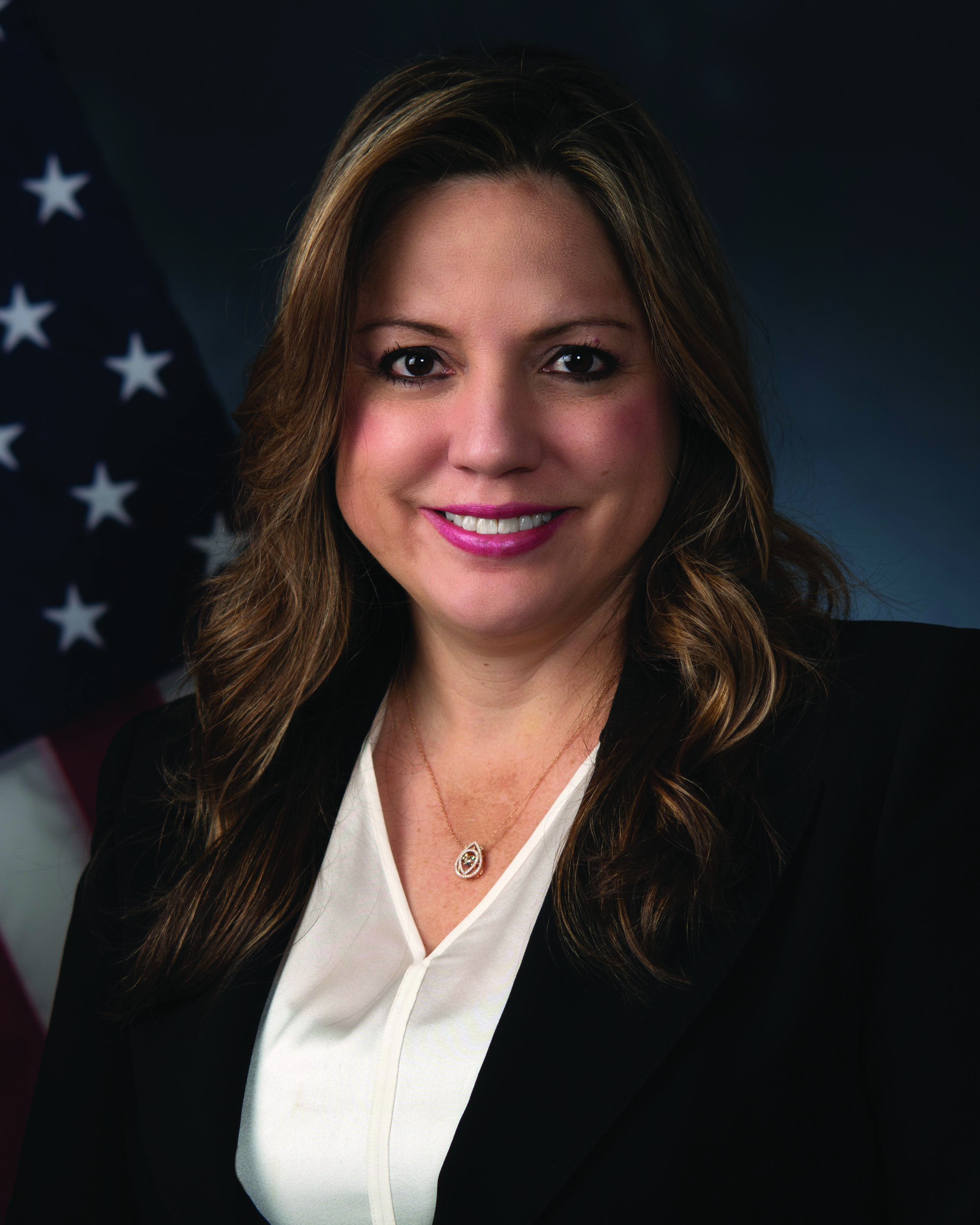
January 30, 2023
Cynthia Sjoberg Radway appointed Secret Service Chief Operating Officer

February 7, 2023
State of the Union Address (NSSE.
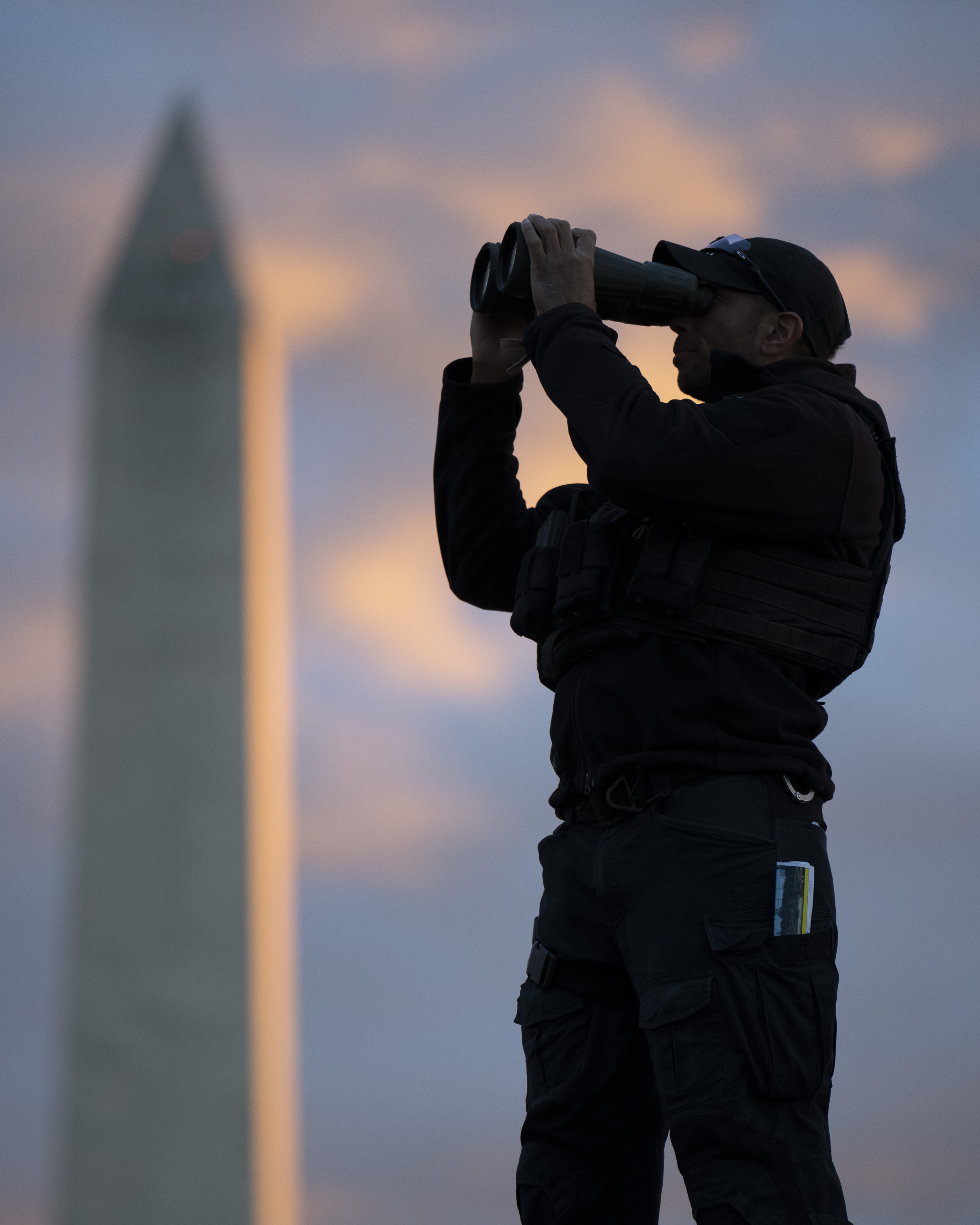
March 1, 2023
20th Anniversary of the Secret Service transferring to the Department of Homeland Security

April 5, 2023
Six individuals indicted by Federal Grand Jury for perpetrating a multi-million dollar COVID Recovery Fund fraud scheme

June 1, 2023
Ronald L. Rowe, Jr. sworn in as Deputy Director of the United States Secret Service

July 5, 2023
158th Anniversary of the creation of the Secret Service.

August 1−3, 2023
National Computer Forensics Institute’s “Cyber Games” Competition

September 18−22, 2023
78th Session of the United Nations General Assembly (NSSE)
THE SECRET SERVICE is entrusted with the responsibility of protecting our nation’s leaders, major events, important sites, and visiting heads of state. The agency provides full-time protection for the President and Vice President of the United States and their families; former Presidents and First Ladies; and various other high-level cabinet officials. The Secret Service also protects crucial locations such as the White House, Vice President’s residence, and foreign embassies in Washington, D.C. Securing National Special Security Events (NSSE), such as the United Nations General Assembly and State of the Union, is also under the jurisdiction of the Secret Service. During election years the Secret Service protects major candidates, the conventions, and selected debates. This is a significant undertaking, and the Secret Service has already begun preparations for the 2024 Presidential Campaign.
During FY 2023, the Secret Service accomplished its protective mission in locations across the world. When the President made an unannounced diplomatic trip to Kiev, Ukraine, Special Agents quickly developed and implemented a security plan that kept the President safe in an active war zone. Additionally, the Secret Service successfully supported trips to six cities that suffered major disasters across the United States during FY 2023. All told, the agency supported 4,811 domestic trips and 343 international trips in FY 2023. Protective operations remain a critical priority for both the Secret Service and the nation.
Protection by the Numbers
4,811
DOMESTIC VISITS
343
FOREIGN VISITS
91
TERRITORY VISITS
5,245
TOTAL VISITS
138
PROTECTIVE ANALYSIS BRIEFINGS
TO 4,489 PEOPLE
10,000
MAIL SAMPLES ANALYZED
3,100
PIECES OF PERMANENT AND
TEMPORARY PROTECTIVE
EQUIPMENT INSTALLED
1M+
PEOPLE SCREENED AT PUBLIC
WHITE HOUSE EVENTS
Protective Operations Stories From This Past Year

The Secret Service is responsible for protecting foreign heads of state or heads of government visiting U.S. soil. Additionally, the Uniformed Division’s Foreign Missions Branch provides year-round protection of embassies and diplomatic residences in Washington, D.C. Foreign leaders often visit the United States to attend NSSEs, such as the annual session of the United Nations General Assembly in New York City or a diplomatic summit. This past year, the Secret Service planned and implemented security operations for the 78th Session of the United Nationals General Assembly and the U.S.-Africa Leaders Summit, in addition to protecting visiting dignitaries at these events.
The U.S.-Africa Leaders Summit took place in Washington, D.C. in December 2022, with heads of state from 44 nations attending. Beyond discussions at the Washington Convention Center, visiting dignitaries attended a Congressional reception on Capitol Hill, a forum at the Smithsonian’s National Museum of African American History, and a dinner at the White House.
Ensuring the safety of events, locations, and people requires careful planning. Whereas NSSE planning timelines typically span one year, the Secret Service was afforded only three months to develop and execute a security plan in partnership with other law enforcement agencies. The event’s success was largely due to the Secret Service’s long-standing partnerships with federal, state, and local law enforcement, as well as its existing communications infrastructure that allowed for rapid establishment of a multi-agency communications center. Secret Service analysts and other partners further supported the protective efforts by assessing threats, managing risks, and creating specialized briefings.
Another essential element of the plan included establishing a secure perimeter consisting of anti-scale fences and checkpoints around the convention center. During the summit, Special Agents and Uniformed Division Officers stood post around the perimeter of the Convention Center. Special Agents and Uniformed Division Officers also protected visiting dignitaries at official events and hotels. When protesters demonstrated outside the Cameroon delegation’s hotel, Secret Service personnel monitored the demonstration and ensured that all dignitaries remained safe. Special Agents also facilitated motorcade movements to ensure visiting African leaders were able to safely navigate the challenging Washington traffic. Beyond the visible Special Agents and Uniformed Division Officers providing protection, a lot happens behind the scenes before, during, and after the event, from initial assessment to information sharing with partners and constant monitoring.
Securing events such as the U.S.-Africa Leaders Summit and the 78th Session of the United Nations General Assembly allows the Secret Service to build partnerships with international protection agencies, which often support Secret Service protective operations when traveling abroad. Overall, protection of foreign dignitaries remains a key part of the Secret Service’s mission.
Established in 2001 with a class of eight recruits, the Motorcade Support Unit provides motorcycle-based support to protective motorcades, dignitary funerals, and other events of national significance. Today the unit has 17 team members and a fleet of 33 Harley Davidson motorcycles. These motorcycles and the personnel that drive them have since become a well-recognized symbol of the Secret Service.

Lieutenant Kenneth Smith has served on the motorcade unit for over two decades. “The minute I heard about the motorcade unit, it was all I wanted to do,” he says. Growing up in New York, Lieutenant Smith developed a passion for motorcycles while watching police motorcades ride in the Macy’s Thanksgiving Day parade. After joining the Secret Service, he served at the White House before transferring to the motorcade unit at the first opportunity.
While moving up through the unit’s ranks, Lieutenant Smith has been integral to the motorcade team’s maturation. To improve the effectiveness and professionalism of the unit, he upgraded the team’s emergency lights, acquired new uniforms, and expanded the team’s office space. He even worked with a graphic designer to design the team’s winged logo. In addition to these improvements, Lieutenant Smith also created a mechanic’s bay in the team’s garage. In the past they relied on outside mechanics for repairs, but today the Secret Service is hiring professional auto mechanics, providing cost savings for the Secret Service.
Lieutenant Smith also modernized the team’s equipment and gear by creating a life-cycle replacement program. The team typically replaces motorcycles every 5-6 years. The unit rides year-round, no matter the weather, which requires specialized gear. In winter, the motorcycles are equipped with sidecars to provide stability while driving on icy Washington, D.C. streets. Because Harley Davidson no longer produces these sidecars, the Secret Service sidecars require customized maintenance and care to remain operational.
Joining the Motorcade Unit is no easy feat. To join the unit, applicants must pass an intense two-week training course that includes a riding assessment, a physical fitness test, and a panel interview. Applicants must also lift the motorcycle upright from a downposition. Although applicants generally enter the program with significant motorcycle experience, learning to ride the heavy Secret Service motorcycles still proves challenging for many trainees.

To successfully pass this rigorous training, Officer-Technician Alta “Lauren” Gunawan says that applicants must have strong internal motivation and a positive attitude. The training “forces you to push through even when you think you can’t,” she says. During training, Officer-Technician Gunawan initially struggled to lift the motorcycle but remained determined. “I really wanted this,” she says. On her second attempt, Officer-Technician Gunawan lifted the motorcycle, passed the course, and became the first woman to join the Motorcade Unit.
Established in 2001 with a class of eight recruits, the Motorcade Support Unit provides motorcycle-based support to protective motorcades, dignitary funerals, and other events of national significance. Today the unit has 17 team members and a fleet of 33 Harley Davidson motorcycles. These motorcycles and the personnel that drive them have since become a well-recognized symbol of the Secret Service.
Officer-Technician Gunawan enjoys that she gets “paid to ride a motorcycle and be a part of history every day. It’s not just about riding a motorcycle though, it’s the passion and pride that I have for this unit, which I love.” Officer-Technician Gunawan encourages any motorcycle enthusiasts to apply. “It’s a once in a lifetime opportunity to push yourself out of your comfort zone,” she says.
Lieutenant Smith also takes great pride in leading the Motorcade Support Unit. In his supervisory role, he especially enjoys the logistics involved in coordinating events. “Seeing something go off without a hitch after you’ve spent a lot of time planning it, that’s very satisfying,” he says. Going forward, Lieutenant Smith hopes to exchange more best practices with other law enforcement entities. The Milwaukee Police Department’s motorcade unit recently adopted a tactical change learned while training with the Secret Service.
Secret Service motorcycles and the Uniformed Division Officers that drive them are active participants in history. One of the unit’s original motorcycles now sits on proud display in the lobby of the Secret Service’s headquarters. This retired motorcycle has a distinguished history, including escorting cabinet members to secure locations during the September 11 attacks. While dedicating the display, Secret Service Director Cheatle described how the motorcycle “evokes pride in the momentous mission we undertake daily.” The motorcade unit and its brave personnel play a crucial role in fulfilling the agency’s mission.
The Secret Service’s National Threat Assessment Center (NTAC) conducts behavioral threat assessments to support the agency’s protective mission. These assessments aim to prevent attacks by identifying concerning behavior that could forewarn a violent incident. Since NTAC’s establishment in 1990, it has proactively assessed threats to prevent violence, both to Secret Service protectees and the community at large.
In January 2023, NTAC released a report called Mass Attacks in Public Spaces: 2016- 2020, analyzing data on 173 mass attacks in the United States. These attacks impact all segments of society, including businesses, schools, houses of worship, and military bases. The purpose of the report was to provide communities with the tools, training, and resources needed to intervene before violence occurs. “Everyone in the community plays a role in violence prevention,” says NTAC Chief Dr. Lina Alathari.
In the report, NTAC analysts identified key commonalities in the attacks studied. The report found that most attackers had a history of physically aggressive behavior. Even before committing a large-scale attack, most attackers had previously caused friends, relatives, or other acquaintances to fear for their personal safety. In addition, 25% of attackers believed in conspiracy theories or hateful ideologies. Many attackers had also experienced stressful life events or severe mental health crises prior to the attack.
The Mass Attacks in Public Spaces: 2016-2020 report has helped communities take measures to prevent violence. NTAC presented the report findings at two virtual rollout events, drawing a combined 32,278 registrants from 92 countries and all 50 states. Registrants represented a variety of organizations, including other federal government agencies, school districts, and private corporations such as Walmart and Major League Baseball. “Targeted violence is preventable if communities have the right information and resources,” says Dr. Alathari. NTAC will continue providing communities with the tools needed to prevent tragic mass attacks.
Secret Service technical security personnel use advanced technology to support the agency’s mission, from managing the cutting-edge alarms and cameras on the White House complex to protecting against unauthorized drones, dangerous chemicals, and explosives. To fulfill this mission, Secret Service technical personnel must constantly learn about the latest private sector technological developments.
One area of development that the Secret Service has monitored is robotic technology. Robotics and artificial intelligence can increase mobility and effectiveness while minimizing the risk of physical injury. Because robots can operate in environments that are not safely accessible to humans, they can examine a debris field resulting from a natural disaster or assess a chemical leak to measure the level of dangerous gasses. Robots can also enter collapsed or damaged buildings to determine structural integrity or to clear confined spaces. The possible application of robots to perform routine autonomous tasks could potentially reduce dangers to Secret Service personnel.
As part of its research into public safety robotics, the Secret Service explored the capabilities of quadruped robotic technology—more commonly known as robotic dogs. The private sector’s latest robotic dogs can climb stairs, open doors, and move fluidly over rough or uneven terrain. Robotic dogs are equipped with software platforms and use on-board cameras to map the external environment. These cameras feed data into algorithms that enable the robotic dog to perform autonomous tasks, such as picking up an object. Robotic dogs can also carry specialized sensors that detect hazardous materials from a safe distance.
To advance the agency’s ongoing research, a team of specialists—to include engineers, Physical Security Specialists, Technical Security Investigators, and Special Agents—recently traveled to the Federal Law Enforcement Training Center in Brunswick, Georgia to test robotic dog capabilities. The technology has significant potential to enhance the agency’s protective mission. The Secret Service will continue its research on robotic dogs and other emerging technologies to determine the best deployment into its live operations. Through the work of this team and other partners, the agency is prepared to leverage innovative technologies to support its mission.
Malicious actors often post threats and display unusual interest toward Secret Service protectees on social media, open discussion boards, and online chatrooms. Starting in 2019, the Secret Service formed a unit to conduct round-the-clock open-source social media analysis to identify and investigate concerning behaviors. Based on the analysis, the unit shares relevant information with Secret Service leadership and operational personnel to inform investigations and protective activities. Open-source information is an important element in understanding the threat landscape and provides front-line Special Agents and Uniformed Division Officers with the information needed to keep protectees and protected sites safe.
Special Agents and analysts with a wide range of backgrounds all help conduct open-source research. Their work focuses on monitoring publicly available social media accounts to identify potential threats and unwanted outcomes. The Secret Service adheres to strict privacy guidelines and focuses on publicly available information. These efforts require Special Agents and analysts to constantly collaborate with both law enforcement and private sector partners to support the branch’s mission.
As the threat from malicious online actors becomes more complex, the Secret Service continues to expand its capabilities, including more advanced cyber tools. The Secret Service is designing its first Open-Source Intelligence Operations Center, which will be housed in the Secret Service headquarters in Washington, D.C. This Operations Center will incorporate new technology and an updated layout to facilitate information sharing and collaboration. These continual innovations allow the Secret Service to continue countering ever-evolving online threats.
Protective Operations
Spotlight Series

Protective Partnership

Internet Investigations

Eyes in the sky
THE SECRET SERVICE'S INVESTIGATIVE MISSION continues to adapt to the changing nature of financial crime. Digital technology has transformed the global economy. The increase in global internet services, mobile computing power, and digital systems, has resulted in a networked financial sector that never sleeps. Online banking, mobile money transfers, cryptocurrency, and contactless payments have changed how Americans make financial transactions. As this digital revolution transforms the global economy, the nature of financial crime also adapts. Longstanding geography-based boundaries have been blurred, and malicious cyber actors can easily conspire across borders and target victims all around the world. Evidence needed for investigations is now often exclusively in a digital format, on a mobile phone, personal computer, web server, or a distributed ledger stored all over the world.
To tackle this unique challenge, the Secret Service’s investigative function operates through an integrated global network of field offices, task forces, and partnerships. Our Special Agents, analysts, and partners conduct investigations around the clock to safeguard the integrity of the U.S. financial system and protect the American people. To address financial crime in today’s environment, the Secret Service focuses on the following issue areas.
Investigations by the Numbers
$1.1B
CYBER-FINANCIAL CRIME LOSS RECOVERED
197
ARRESTS FOR COUNTERFEITING
1,019
ARRESTS FOR CYBER FINANCIAL CRIMES
5,245
TOTAL VISITS
$21.8M
COUNTERFEIT CURRENCY SEIZED
$257.5M
ASSETS SEIZED
$464.9M
ASSETS RETURNED TO VICTIMS
$98.9M
CRYPTOCURRENCY-RELATED ASSETS SEIZED
With the digitization of financial payment systems, transnational cyber-enabled financial crimes have grown. Transnational criminal organizations present systemic risks to the American financial system. The Secret Service remains at the forefront of detecting, preventing, and disrupting this type of criminal activity. Secret Service investigations brought many cyber-criminals to justice in FY 2023 and recovered $1.1 billion dollars in cyber financial loss. Additionally, Secret Service investigations also prevented potential fraud loss by arresting individuals before they could fully realize the gains from their crimes.
Fraudulent operations that prey on Americans and take advantage of the U.S. financial system undermine collective trust in our economy. The Secret Service works daily to counter threats ranging from card skimmers, ATM cash out schemes, laundering, business email compromise, and other illicit actions. In a digitally connected world, investigative success, even with respect to more traditional financial crimes, depends on broad and dynamic partnerships with industry, state and local officials, and international law enforcement groups. The Secret Service grows and develops these partnerships to harness the collective expertise of organizations across the world to tackle the challenges inherent to a digital, data-driven economy.
In 1995, the Secret Service established its first electronic crimes task force, modeled after the Secret Service’s existing financial crimes task forces. The agency has since expanded that model to develop a national network of electronic crimes task forces for the purpose of preventing, detecting, and investigating various forms of electronic crimes.
Known as Cyber Fraud Task Forces (CFTF), these groups unite team members from a variety of backgrounds to focus on investigating cyber financial crimes, including emerging trends like the illicit use of cryptocurrency. Many members of state and local law enforcement act as task force officers within the CFTFs after training at the Secret Service’s National Computer Forensic Institute. These task forces are also comprised of Secret Service Special Agents, technical experts, and forensic analysts operating in the CFTF Digital Evidence Forensic Labs.
At present, the Secret Service has operationalized CFTFs in 42 domestic offices. In the coming years, the Secret Service plans to further extend the network of CFTFs across the country and around the globe.
At its inception in 1865, the Secret Service was authorized to combat counterfeiting, which had become a major threat to the economy following the Civil War. Special Agents at the time had a simple method—infiltrate the criminal groups involved in counterfeiting operations and arrest key members of those groups. Shutting down these operations was critical to instilling nationwide trust in the dollar and the American financial system. Today, combatting counterfeit remains a core investigative responsibility, and the ability of our forensics specialists to detect, identify, and trace counterfeiting to its source remains unmatched. However, evolving technologies have led the Secret Service to diversify its methods to effectively investigate counterfeit operations that are facilitated over and aided by digital platforms.
Investigative Operations
Spotlight Series

Shutting Down K0pa:
The Importance of International Partnerships

International Money Laundering Syndicate Shut Down

PARTNERSHIPS WITH THE COMMUNITY

Community Outreach and Childhood Safety
ELITE TRAINING is essential for Secret Service employees to develop the skillsets needed to accomplish the protective and investigative missions. The Secret Service has a dedicated training facility, the James J. Rowley Training Center (RTC), to meet these needs. At the facility, new recruits and existing employees are trained around-the-clock in skills such as motorcade movements, defensive driving, conducting a search warrant, and firearm handling, among many others. As the start of the 2024 presidential campaign draws near, selected Special Agents participated in training courses to prepare them to protect presidential candidates as they travel the country. State-of-the-art training ensures that the Secret Service is always mission ready.
Training by the Numbers
15
Special Agent Basic Training Classes
254
GRADUATED Special Agents
12
Uniformed Division Basic Training Classes
180
GRADUATED Uniformed Division Officers
2
Technical Law Enforcement Basic Training Classes
19
GRADUATED Technical Law Enforcement Officers
744
training classes conducted
10,796
students
38,010
firearms qualified
436
completed CNOS trainings
44,199
instances of online training
Training
Spotlight Series

In Remembrance of Special Agent Clifford Dietrich and the Creation of the Water Safety Program

Weapons Specialist David Cohen
ALONGSIDE AGENTS AND UNIFORMED OFFICERS, a dedicated workforce of administrative, professional, and technical experts (APTs) provide invaluable support to enable the Secret Service to accomplish its mission each day. Through continuous human capital efforts, robust strategic planning, cutting-edge information technology, skilled financial management, and rigorous training, among other mission-enabling activities, APTs help the agency achieve operational excellence. The professionalism, diversity, adaptability, and excellence demonstrated by Secret Service mission support personnel exemplify why the Secret Service remains the preeminent federal law enforcement agency in the United States.
The Secret Service accomplishes its full mission through robust partnerships and relationships across the federal government. To ensure the agency can meet current and future mission requirements, the Secret Service relies on a continuous dialogue with members of Congress and their staff. Secret Service Congressional Affairs personnel fulfill this liaison role, relaying the agency’s legislative priorities, including the annual budget request and other mission needs. These professionals routinely engage with field offices to organize meetings between Secret Service leadership and local members of Congress to ensure awareness of the work the agency is doing in their districts and to highlight the work of this elite organization.
Operational Advisory Groups (OAGs) are another vital partnership, allowing stakeholders to provide direct input to the Secret Service to better inform resourcing decisions on topics of interest. In FY 2023, the OAG addressed deployable barriers for protective events. Secret Service personnel met with vendors as well as representatives from other federal agencies to discuss common acquisition needs related to deployable barriers. The OAGs leverage partnerships to learn from the experiences of various end users, subject matter experts, program managers, vendors, and acquisition personnel. Secret Service analysts review this information to identify solutions for any current or emerging capability gaps. In this way, the Secret Service ensures it obtains high-quality information to help identify emerging technology, forecast future threats, and coordinate updated legislation and policies.
Mission Support by the Numbers
1,371
RECRUITING EVENTS
2.5M+
INDIVIDUALS ENGAGED ON SOCIAL MEDIA
1.2M+
WEBSITE VISITORS
74.4K
PODCAST EPISODE PLAYS
730
LAPTOPS DONATED TO SCHOOLS
100%
FISMA SCORECARD METRICS EXCEEDED
100+
MEETINGS WITH CONGRESSIONAL MEMBERS AND STAFF
130+
BRIEFINGS TO DHS SECRETARY AND EXECUTIVE LEADERSHIP
3,865
VISAS PROCESSED FOR MISSION-RELATED TRAVEL
2,355
PASSPORT PROCESSED FOR MISSION-RELATED TRAVEL
639
NEW SECRET SERVICE EMPLOYEES
Mission Support
Spotlight Series

Recruiting Gold Medal Talent

Preserving Our Legacy
BE TOMORROW'S SECRET SERVICE
Learn More at SecretService.gov
or
Call Us at 888-813-USSS
Deaf and Hard of Hearing | EOE 202-406-5370
Professional, Technical
Student Employment Opportunities
Opportunities for high school to graduate students, and all in between, to learn from an elite group of individuals who are among the brightest and most committed in the nation.
Internship Program
The Pathways Student Intern Program is designed to provide students enrolled in a wide variety of educational institutions, from high school to graduate level, with opportunities to work in agencies and explore Federal careers while still in school with flexible scheduling and while getting paid for the work performed.
Recent Graduates Program
The Recent Graduates Program affords developmental experiences in the Federal government and is intended to promote possible careers in the civil service to individuals who have recently graduated from qualifying educational institutions or programs.
Presidential Management Fellows (PMF) Program
The PMF program is a flagship leadership development program for advanced degree candidates. This program attracts and selects from among the best candidates and is designed to develop a cadre of future Federal Government leaders.
Veteran Employment
Opportunities
Opportunities for veterans to learn from an elite group of individuals who are among the brightest and most committed in the Nation.
DOD SkillBridge
DoD SkillBridge is an opportunity for service members to gain valuable civilian work experience through administrative, professional, technical internships during the last 180 days of service.
Operation Warfighter (OWF)
Operation Warfighter (OWF) is a DoD internship program that matches qualified wounded, ill, and injured service members with non-funded federal internships in order to gain valuable work experience during their recovery and rehabilitation in an administrative, technical, professional internship.

